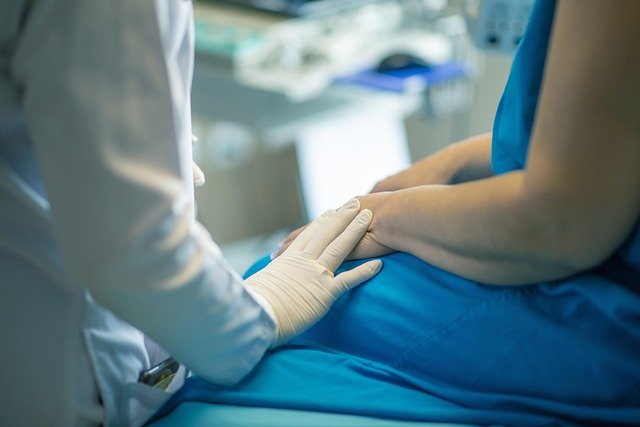Fat Removal Methods: Your Guide to Body Contouring
Explore the range of fat removal options for body contouring, from surgical liposuction to non-invasive treatments like CoolSculpting, laser, and radiofrequency. Learn how each method works, expected results, recovery time, risks, costs, and how to choose the best approach to target stubborn fat and shape your silhouette.

Fat reduction and body contouring have become increasingly common as people seek ways to eliminate localized pockets of fat that resist diet and exercise. Whether you prefer a surgical approach or a less invasive option, several clinically used techniques can help reshape the body. This article summarizes the main methods, how well they work, what risks to expect, how long results may last, and what to consider before deciding on treatment.
Non-surgical fat reduction options Non-invasive procedures have grown in popularity for patients who want minimal downtime. CoolSculpting (cryolipolysis) freezes fat cells using controlled cooling, causing targeted cells to break down and be naturally removed by the body over weeks to months. Other non-surgical technologies include laser-assisted therapies and radiofrequency devices that deliver heat or energy to disrupt fat cells and tighten skin. These treatments are attractive for people seeking modest contouring without anesthesia or significant recovery.
How effective are different treatments? Effectiveness depends on the approach and the individual. Liposuction, a surgical technique performed by plastic surgeons, typically produces the most immediate and dramatic reshaping because larger volumes of fat can be removed in a single operation. Initial improvements are often visible within weeks, while final contours can take several months as swelling subsides.
Non-invasive procedures such as CoolSculpting usually yield subtler, gradual changes. Many patients require multiple sessions to reach their goals, and measurable results commonly appear within 1–3 months after treatment as the body clears treated fat cells. While these methods generally remove less fat than surgery, they work well for small, stubborn areas and spare patients the recovery associated with an operation.
Risks and important considerations All medical procedures carry potential risks. With liposuction, common concerns include complications related to anesthesia, infection, temporary or permanent changes in skin sensation, and uneven contours if fat removal is imbalanced. Recovery time varies by extent of the procedure and can range from a few days of light activity to several weeks before full recovery.
Non-surgical treatments tend to have lower risk profiles. Typical side effects are transient and may include redness, swelling, bruising, sensitivity, or mild discomfort at the treated site. These effects usually resolve within days to a few weeks. However, non-invasive options might not be suitable for everyone and generally do not achieve the same degree of fat removal as surgical methods.
Durability of results Results from both surgical and non-surgical fat reduction can be long-lasting when patients maintain a stable weight and healthy lifestyle. Liposuction physically removes fat cells from treated areas, and those cells do not return; however, remaining fat cells can enlarge if a person gains weight. Similarly, treatments like CoolSculpting eliminate fat cells in targeted zones, but they do not prevent future fat accumulation elsewhere or in untreated areas. Sustaining results typically requires ongoing attention to diet, exercise, and weight management.
Deciding which option is right for you Start with a consultation with a board-certified plastic surgeon, dermatologist, or qualified provider experienced in body contouring. A professional evaluation will consider your overall health, body shape, the amount and location of fat to be addressed, and your aesthetic goals. Think about factors such as desired outcome, budget, tolerance for downtime, and whether you prefer a surgical or non-surgical path.
Realistic expectations are essential: these procedures are designed to improve body contours, not to serve as primary weight-loss solutions. Ideal candidates are usually close to their target weight but struggle with persistent fat deposits that resist lifestyle measures.
Cost overview (estimates)
| Procedure | Typical Provider | Estimated Cost Range |
|---|---|---|
| Liposuction | Plastic surgeon | $3,000 - $10,000+ |
| CoolSculpting | Med spa or dermatologist | $2,000 - $4,000 per area |
| Laser-assisted lipolysis (Laser Lipo) | Cosmetic surgeon | $1,500 - $5,000 per area |
| Radiofrequency fat reduction | Med spa or dermatologist | $1,000 - $4,000 per treatment |
Note: Cost ranges are approximate and can vary by geographic location, provider expertise, and the number of sessions required. Always verify current pricing and financing options before committing to treatment.
Final thoughts A variety of safe and effective fat removal techniques are available, from traditional liposuction to modern non-invasive treatments such as CoolSculpting and energy-based therapies. Each option has advantages and trade-offs related to results, recovery, risk, and cost. Consulting a qualified clinician will help you weigh these factors and choose a tailored plan that aligns with your goals and lifestyle.
This article is intended for informational purposes and does not replace professional medical advice. Please speak with a licensed healthcare provider to receive personalized recommendations and treatment guidance.






